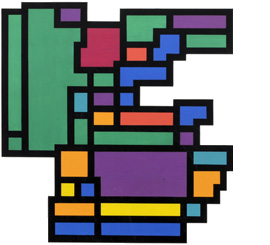|
The Japanese philosopher, Hiroshi Kawano (*1925), is one of the most important pioneers in the conquest of computer technology for the arts. The ZKM is dedicating a first retrospective to his work. The exhibition comprises numerous works and documents which have never before been presented outside Japan, and draws on the rich Hiroshi Kawano Archive located at the ZKM since 2010. The retrospective emphasizes Kawano's special role in the circle of pioneers in »computer art«: he was neither artist, who discovered the computer as a new production medium and theme, nor engineer who came to art via the new machine, but a philosopher, who left his desk for the computer center to experiment with theoretical models.
As early as September 1964, Kawano published the first Designs he had calculated with the aid of the OKITAC 5090A computer at the University of Tokyo in IBM Review, a Japanese professional journal. The young philosopher, who was teaching aesthetics at the Metropolitan College of Air Technology at the time, arrived at the information processing machine, the computer, by way of his critical investigations with neo-Kantianism, symbolism, semiotics and, finally, information theory. With the help of this technology, he began exploring the logic of artistic creation through the experimental generation of pictures, poetry, sculptures and music.
Hiroshi Kawano's decision to give his archive to the ZKM was, in part, thanks to a German philosopher who gave him the decisive impulse to bring together aesthetics and computer technology, namely, Max Bense who taught in Stuttgart.
Curator: Margit Rosen
A German-English book with contributions by Hiroshi Kawano, Yoshiyuki Abe, Jungkwon Chin, Simone Gristwood, Akemi Ishijima, Jungyeon Ma and Margit Rosen will be published in conjunction with the exhibition.
The publication was made possible by the kind support of the Japan Foundation.

|


